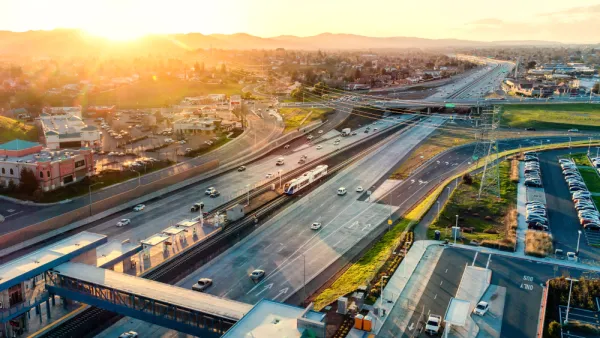Bus rapid transit (BRT) is often the most feasible, quickly implemented and cost-effective way to improve mobility in the United States, concluded a distinguished panel of transport experts at a Brookings Institution event.
The event, organized by the Latin America Initiative, invited guests to discuss lessons learned from some of the widely regarded best practices of BRT in Latin America and their applicability in the U.S., where rapid population growth, increasing congestion and shrinking municipal and federal budgets present an urgent need to find appropriate transportation and infrastructure improvements.
Panelists included Marc Elrich, councilmember for Montgomery County, Maryland; Robert Puentes, senior fellow at Brookings; Sam Zimmerman, urban transport advisor for The World Bank; and Dario Hidalgo, director of Research and Practice for EMBARQ (the producer of this blog). The discussion was facilitated by moderator Mauridio Cardenas, senior fellow and director of the Latin America Intiative at Brookings. The looming question: If BRT works so well in Latin America, how come we don't see as many examples of it in the U.S.?
Thanks to Erica Schlaikjer
FULL STORY: Latin America’s Bus Rapid Transit Boom Offers Lessons for the U.S.

National Parks Layoffs Will Cause Communities to Lose Billions
Thousands of essential park workers were laid off this week, just before the busy spring break season.

Retro-silient?: America’s First “Eco-burb,” The Woodlands Turns 50
A master-planned community north of Houston offers lessons on green infrastructure and resilient design, but falls short of its founder’s lofty affordability and walkability goals.

Delivering for America Plan Will Downgrade Mail Service in at Least 49.5 Percent of Zip Codes
Republican and Democrat lawmakers criticize the plan for its disproportionate negative impact on rural communities.

Test News Post 1
This is a summary

Test News Headline 46
Test for the image on the front page.

Balancing Bombs and Butterflies: How the National Guard Protects a Rare Species
The National Guard at Fort Indiantown Gap uses GIS technology and land management strategies to balance military training with conservation efforts, ensuring the survival of the rare eastern regal fritillary butterfly.
Urban Design for Planners 1: Software Tools
This six-course series explores essential urban design concepts using open source software and equips planners with the tools they need to participate fully in the urban design process.
Planning for Universal Design
Learn the tools for implementing Universal Design in planning regulations.
EMC Planning Group, Inc.
Planetizen
Planetizen
Mpact (formerly Rail~Volution)
Great Falls Development Authority, Inc.
HUDs Office of Policy Development and Research
NYU Wagner Graduate School of Public Service




























